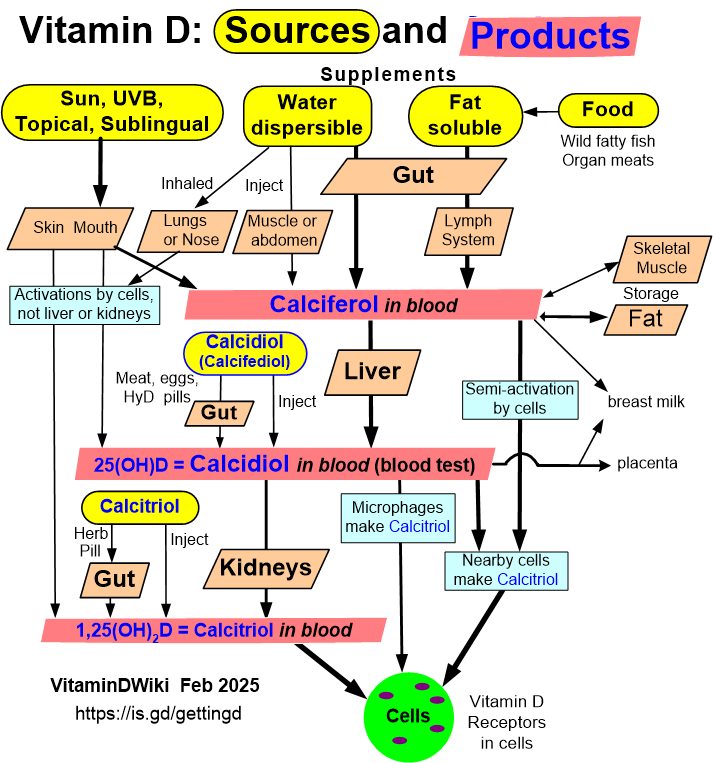Poor kidneys rarely get enough or the right form of vitamin D
Cross-sectional evaluation of the relationship between vitamin D status and supplement use across levels of kidney function in adults.
BMJ Open. 2019 Feb 22;9(2):e022471. doi: 10.1136/bmjopen-2018-022471.
Moore LW1,2, Suki WN3, Lunsford KE1,4, Sabek OM1,4, Knight RJ1,4, Gaber AO1,4.

📄 Download the PDF from VitaminDWiki
OBJECTIVES:
The objective of this study was to assess vitamin D status of US non-pregnant adults using a standardised assay across 15 mL/min/1.73 m2 increments of kidney function, report the use of dietary supplements containing vitamin D and assess relationships between vitamin D and markers of bone resorption.
DESIGN: This study is a cross-sectional evaluation.
SETTING: The study is from the US National Health and Nutrition Evaluation Survey in 2001-2012.
PARTICIPANTS: The participants were non-institutionalised, non-pregnant adults, age ≥20 years.
PRIMARY AND SECONDARY OUTCOME MEASURES:
The primary outcome measure was serum 25OHD evaluated using liquid chromatography-tandem mass spectroscopy traceable to international reference standards. Secondary outcome measures were use of dietary supplements containing vitamin D and the serum intact parathyroid hormone and bone-specific alkaline phosphatase in a subset of participants.
RESULTS:
The median 25OHD concentration in 27 543 US non-pregnant adults was 25.7 ng/mL (range, 2.2-150.0 ng/mL). Vitamin D supplements were used by 38.0%; mean (SE)=757 (43) international units/day. The range of 25OHD concentration across groups, stratified by kidney function, was 23.0-28.1 ng/mL. The lowest concentration of 25OHD observed was in people with higher kidney function (23.0 ng/mL for estimated glomerular filtration rate >105 mL/min/1.73 m2). Only 24% of people not taking a dietary supplement had a 25OHD concentration >30 ng/mL. Serum intact parathyroid hormone inversely correlated with 25OHD within all kidney function groups. Bone-specific alkaline phosphatase was also negatively associated with 25OHD concentration.
CONCLUSIONS:
These data indicate that 25OHD concentrations and supplement use may be suboptimal in a significant proportion of the population, across all kidney function levels. The response of bone resorption markers further suggests that 25OHD levels could be improved. Together, these data support a re-evaluation of the 25OHD concentration associated with health in adults.
